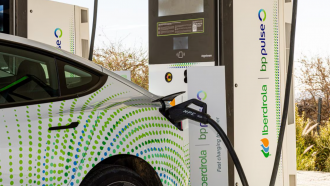In what could be the country’s most aggressive plan to tackle its chronic shortage in drinking water supply, the United Arab Emirates just might drag icebergs from Antarctica and park them off the nation’s coast.
The environmental company National Advisor Bureau Limited seeks to provide a novel freshwater source for the region by towing an Antarctic iceberg over 9,000 kilometers (5.592 miles) across the Indian Ocean to the eastern emirate Fujairah’s coast.
Mining Drinking Water From Iceberg
Mining icebergs for drinking water appears to be a rather radical approach to drinking water issues such as those of the UAE’s. But an average iceberg actually contains more than 20 billion gallons of water, enough to supply 1 million people for five years, revealed the firm’s managing director Abdullah Mohammad Sulaiman Al Shehi.
The iceberg could produce micro-climates and bathe the arid landscape in rain, Shehi added.
A strong advocate of harvesting icebergs since he was tasked by Saudi royals in the 1970s to explore the idea, Shehi teamed up with Georges Mougin, a French engineer, to present the rather weird solution to the UAE government.
“We plan to tow icebergs located north of Antarctica, some 9,200 km to the shores of Fujairah,” he expressed.
The gulf state is among the most arid nations in the world, with only 78 millimeters (3 inches) of rain falling each year as the World Bank noted. It then depends on groundwater reserves and seawater desalination — the former a shrinking supply, and the latter a costly procedure consuming hefty amounts of energy and pumping brine back into the sea.
How It Can Be Done
Icebergs usually take long to melt, because about 80 percent of their mass stays underwater. The white ice exposed on top, on the other hand, reflects sunlight and heat, decreasing the water amount that evaporates.
The project, planned to begin in early 2018, initially seeks to transport an iceberg and then return for more once the first phase proves successful. The company predicts that it could take up to a year to tow an iceberg to the country, specifically to Fujairah where the water is deep enough to accommodate the floating island.
The ice would be insulated using a special cover. The company has reportedly run three-dimensional computer simulations, expecting to lose 30 percent of the target iceberg along the way.
Shehi speculated, too, that the floating icebergs could draw in more tourists.
What’s in store for the UAE’s drinking water then? The icebergs could hold up to 750 billion liters of fresh water, Shehi said, adding that the government has found the plan sound and is now seeking funds for it.
National Advisor Bureau Limited will then start processing the water once the iceberg arrives offshore. Blocks of ice will be taken above the waterline and crushed into water before they will be stored in massive tanks and professionally filtered.
It’s the purest water on Earth, the executive claimed.
Back in April, researchers from the Massachusetts Institute of Technology reported creating an innovative device using solar energy to harvest water out of thin air, even in dry or desert surroundings.
A separate team from the United Kingdom also invented a graphene-based sieve capable of removing salt from seawater, a development that could help millions across Earth who do not have access to clean, safe drinking water.









